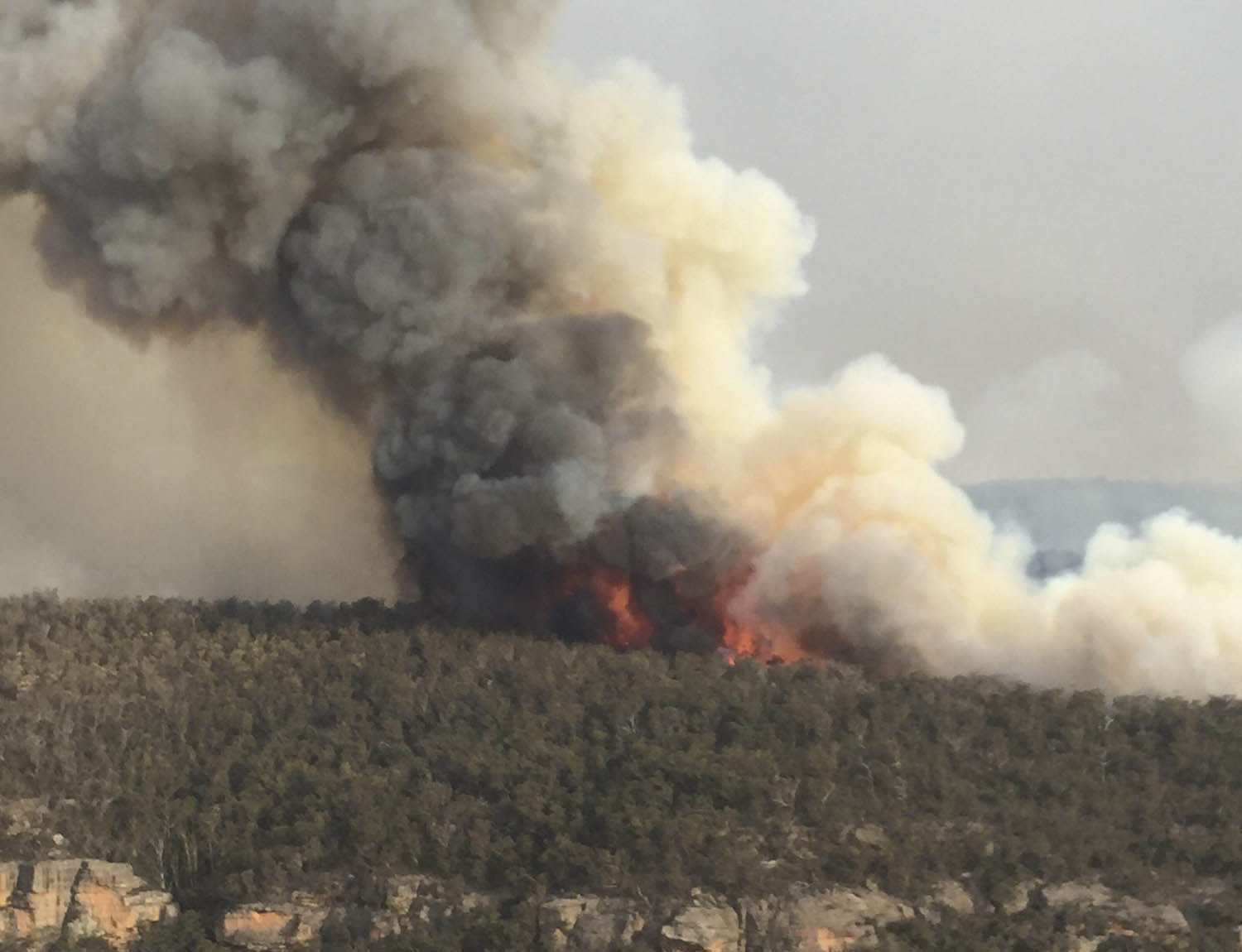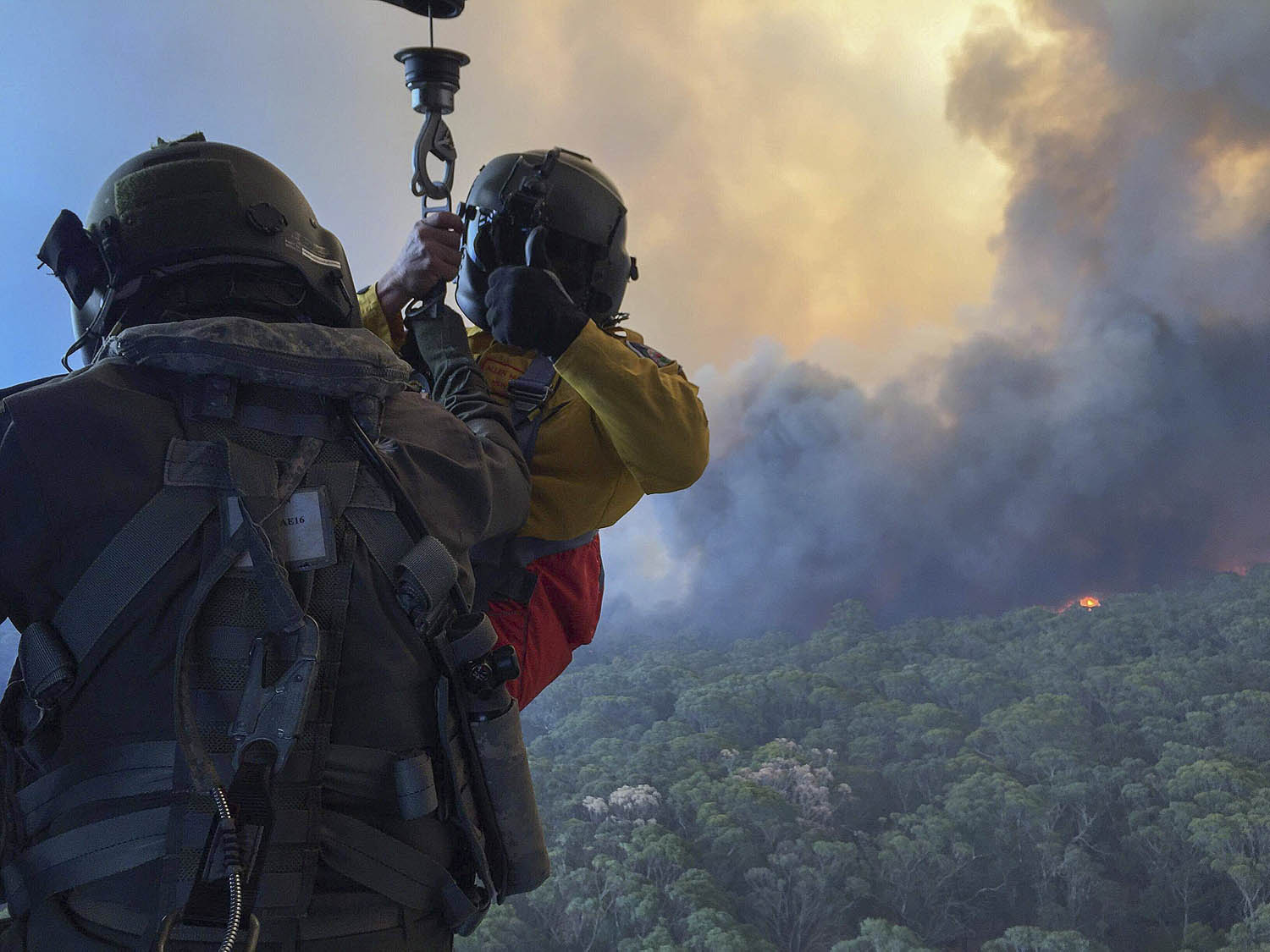Royal Navy Pilot Saves Lives from Fires in Australia
A Royal Navy helicopter pilot has helped save countless lives from the apocalyptic fires devastating Australia. Lieutenant Commander Nick Grimmer has been in near round-the-clock action for two months flying rescue missions, evacuating people otherwise trapped by the flames.
The 35-year-old, originally from Great Yarmouth, is on a three-year exchange in Australia, swapping submarine-hunting Merlin helicopters at RNAS Culdrose in Cornwall for troop carrying MRH90 helicopters based at HMAS Albatross, 100 miles south of Sydney.
The Royal Australian Navy’s 808 Squadron – specialists in disaster relief operations – have been in constant action since November providing assistance to people whose lives have been threatened by the fires.
The MRH90 Flight Commander was enjoying a rare break from flying, getting ready to enjoy New Year celebrations when his flight – five aircrew and 14 engineers – was ordered to join the amphibious ship HMAS Choules as the bushfires engulfed the south-eastern tip of Australia.
Inhabitants of the small town of Mallacoota fled to the beach when the flames could no longer be held back. They spent a few days on the sands before Choules arrived to take them off.
The bulk of the evacuees were collected by landing craft; Lieutenant Commander Grimmer’s helicopter launched to search for people cut off away from the beach as well as to survey the extent of the conflagration and the damage it had caused.

Lt. Cmdr Grimmer over the Grose Valley fire (RN)

The Grose Valley fire (RN)

The Grose Valley fire (RN)

NSW RFS firefighter prepares to winch down from Lt. Cmdr. Grimmer's helicopter, Grose Valley fire (RN)
“People tend to look after their properties until the very last minute. When the time comes to leave, the roads are often already blocked by fire so there’s no escape," he said.“People either retreat to a ‘cocoon’ in the center of their homes, or they look for evacuation. Saving them just in time is extremely gratifying,” the naval aviator explained.
The Choules – formerly in UK service as RFA Largs Bay – was turned into “something of a Noah’s Ark” as alongside around 1,100 people evacuated from Mallacoota were 117 dogs, four cats, a parakeet and a rabbit. They were safely transported along the coast to Melbourne.
“Watching people – everyone from a baby of two months to an elderly lady in her 90s – get off in Melbourne, relieved, saying ‘goodbye’, ‘thank you’ and shaking everyone’s hands was very gratifying, definitely the highlight and made all our efforts seem worthwhile.”
Despite wall-to-wall global media coverage, Lieutenant Commander Grimmer says nothing can prepare anyone for the reality on the ground.
“I don’t think people in the UK can comprehend the size or gravity of them. There are towns without power, without communications with the outside world, where nine out of ten buildings have been destroyed.” Lieutenant Commander Grimmer added.
The pilot has been flying for up to ten hours a day alongside his colleagues in the most difficult of conditions, with crews expected to make life and death decisions on almost every sortie.
“You have to fly low because of the visibility – then suddenly you find yourself in thick smoke and are forced to either turn back or climb rapidly to avoid running into mountains. There’s a fine line between what you can do and what is not possible, with risks being constantly re-evaluated," he said. “It’s frequently difficult to breathe. Your clothes, in fact the entire aircraft stinks of smoke and everyone is exhausted. But it’s also by far the most rewarding thing we’ve done.”
Lieutenant Commander Grimmer spent six months in Sierra Leone as part of Britain’s efforts to halt the spread of the Ebola virus in 2014-15 – another challenging but rewarding mission – but nothing in his 12 years in the Royal Navy compares with the past two months in southeastern Australia.
“Every day you go through the spectrum of emotions – from intense lows to highs,” he explained. “I’m an animal lover and seeing the impact on wildlife is heart-breaking – all too often we are seeing dead animals who have succumbed to the fires in fields we are landing in.”
“We recently winched down our aircrewman from 150 feet to a man on his porch. He was fine, his house was safe, but his wife had fled the fire a few days before. She had no idea whether he was alive or the house was standing due to no power or communications. We were able to tell her both were safe – that was a wonderful feeling.”
This article appears courtesy of Royal Navy News and may be found in its original form here.
The opinions expressed herein are the author's and not necessarily those of The Maritime Executive.
